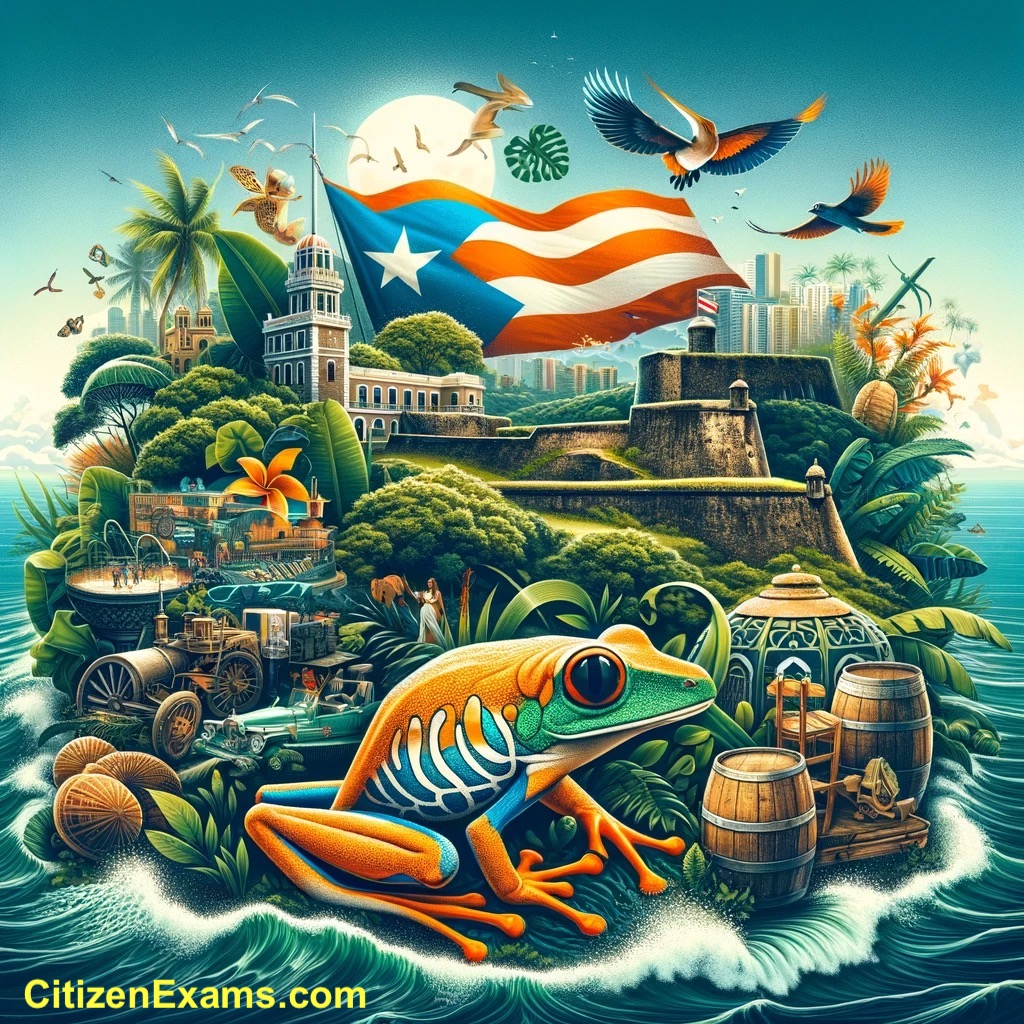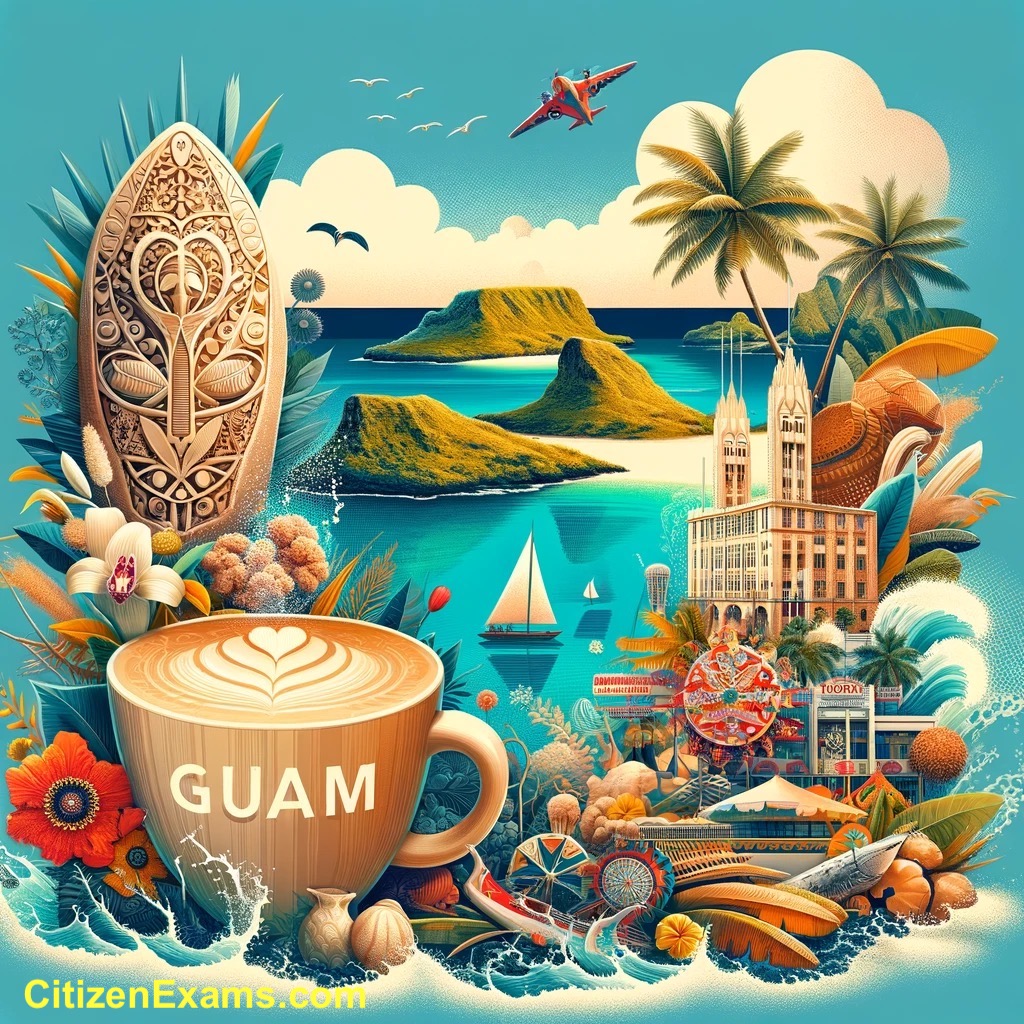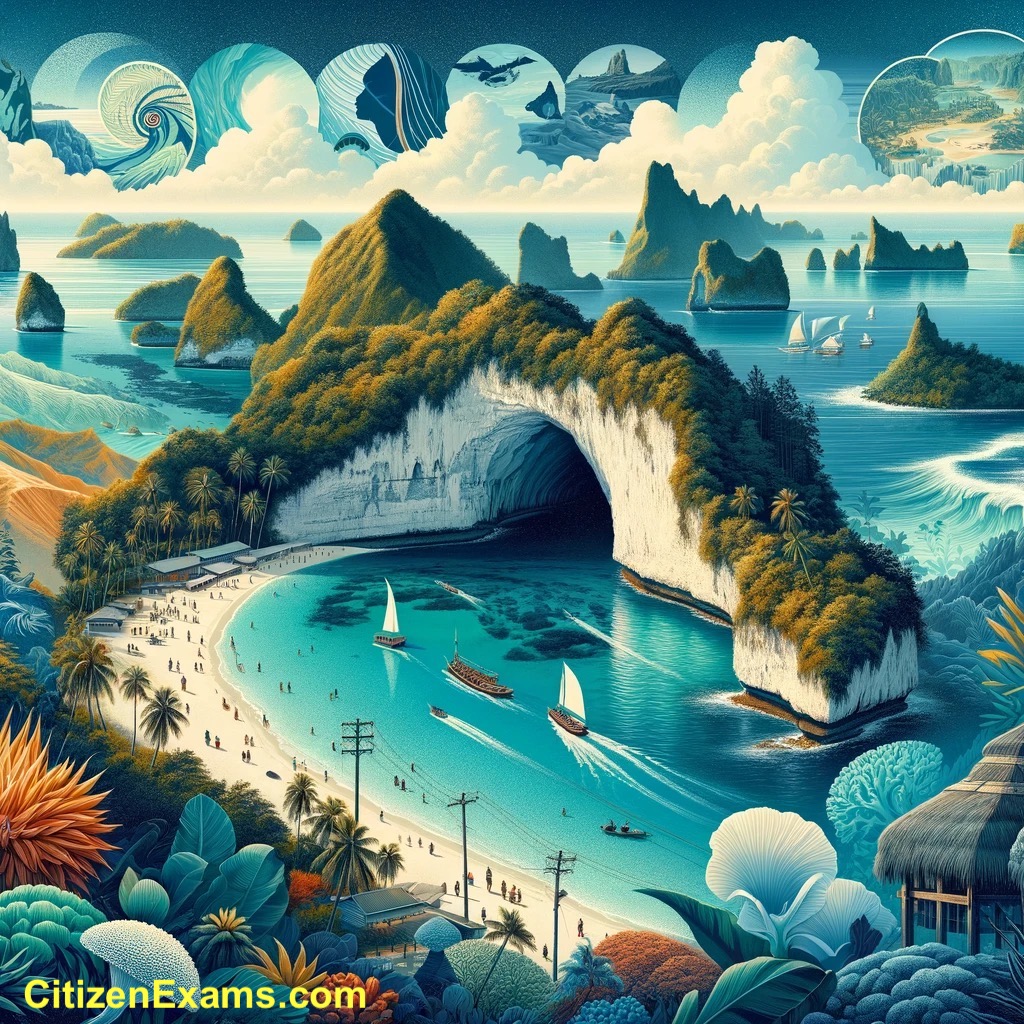US Territories
The United States might be known for its 50 states, but its family portrait includes five unique territories, each with its own story.

Puerto Rico 🇵🇷, nestled in the Caribbean, is a vibrant blend of Spanish, African, and Taino cultures, famous for its enchanting beaches 🏖️, lush El Yunque National Forest 🌳, and the historic charm of Old San Juan 🏰. It became a U.S. territory following the Spanish-American War in 1898. Puerto Rico is a place of lively music 🎶, delicious cuisine 🍲, and a spirited community that embodies resilience and festivity.

Guam 🇬🇺 lies in the western Pacific, offering breathtaking sunrises 🌅 as America’s daybreak. Known for its strategic military importance, stunning Tumon Bay 🌊, and the War in the Pacific National Historical Park 🏝️, Guam became a U.S. territory in 1898 after the Spanish-American War. It’s a melting pot of Chamorro culture, history, and tropical beauty.

The U.S. Virgin Islands 🇻🇮, floating in the Caribbean, are a trio of islands - St. Thomas, St. John, and St. Croix - each with its own allure. From the bustling harbors of Charlotte Amalie 🛳️ to the tranquil beaches of St. John and the historic sugar plantations of St. Croix, these islands became a U.S. territory in 1917, purchased from Denmark. They’re famous for their dazzling coral reefs 🐠, rich cultural heritage, and inviting waters.

American Samoa 🇦🇸, located in the South Pacific, offers a glimpse into Polynesian culture against a backdrop of volcanic mountains and rainforests 🌲. It became a U.S. territory in 1900 through a deed of cession. Known for the untouched beauty of the National Park of American Samoa, the territory is a haven for those looking to experience traditional Samoan culture 🌺 and the serene Pacific lifestyle.

The Northern Mariana Islands 🇲🇵, a chain of 14 islands in the North Pacific, boast stunning limestone caves 🏞️, World War II artifacts, and the breathtaking Saipan lagoon. They became a U.S. territory in 1976, following the approval of the Covenant to Establish a Commonwealth of the Northern Mariana Islands in Political Union with the United States. The islands are celebrated for their rich history, vibrant marine life 🐟, and the warm hospitality of their people.
How are territories different from states?
Residents of U.S. territories cannot vote in general presidential elections due to their territories’ status. The U.S. Constitution grants the right to vote for President and Vice President to citizens residing in the 50 states and the District of Columbia. However, residents of territories like Puerto Rico, Guam, the U.S. Virgin Islands, American Samoa, and the Northern Mariana Islands do not have this right while residing in their territories.
The District of Columbia, though not a state, has been granted the right to vote in presidential elections through the 23rd Amendment to the Constitution, which allotted it electors in the Electoral College. However, no similar constitutional amendment exists for the U.S. territories. While residents of these territories are U.S. citizens (except for American Samoans, who are considered U.S. nationals), they must establish residency in one of the 50 states or the District of Columbia to participate in federal elections, including voting for President.
What does “US Nationals” mean?
U.S. Nationals generally refer to individuals who were born in American Samoa or on Swains Island, territories of the United States in the South Pacific. U.S. nationals owe their allegiance to the United States and can travel freely to and reside in the United States. They can apply for U.S. citizenship through naturalization after meeting certain residency requirements. However, unlike U.S. citizens, U.S. nationals cannot vote in federal elections or hold elected federal offices, though they enjoy many other rights similar to those of citizens.
Both U.S. citizens and U.S. nationals carry U.S. passports, but the passports of U.S. nationals have an endorsement indicating that the bearer is a U.S. national and not a U.S. citizen. This distinction is unique and primarily affects those connected to American Samoa.